Snakes are typically brown or green in color. Many beautiful snakes, nevertheless, go overlooked. There are no known species of pink-colored snakes. Pink is not one of the various colors that snakes may be; instead, they can be red, orange, yellow, green, blue, purple, brown, black, and even white.
Yet, certain snakes exhibit pinkish undertones on specific areas of their body, including the tongue, belly, and scales. Pink snakes are quite uncommon.
Thus, we are also focused on morphs here. The word “morph” designates a specific genetic snake mutation. A snake with yellow and black scales is therefore a different morph from one with white and yellow scales, even if they are both members of the same species.
The availability of a morph, which might range from being somewhat common to being nearly impossible to obtain, can have a big impact on its price.
Learn more about this underappreciated species!
24 Attractive Pink Snakes in World
1) Southwestern Speckled Rattlesnake
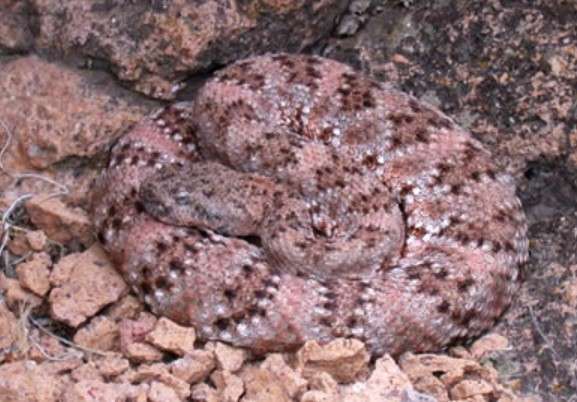
| Scientific Name | Crotalus mitchellii pyrrhus |
| Size | 30-60 inches |
| Life Span | 20 Years |
| Location | Southwestern United States and northern Mexico, particularly in Arizona and Sonora |
| Toxicity | Highly Toxic |
| Estimated Price: | $100-$2000 |
Most speckled rattlesnakes in the Southwestern United States are grey or brown, with clear spots or blotches that can be yellow, red, or brown.
They are ambush predators that eat small mammals, birds, lizards, and other snakes, among other things. It can also be pink sometimes.
Because southwestern speckled rattlesnakes are venomous and could hurt people, they should be respected and left alone in the wild.
Without the right permits or licences, it is against the law to catch or kill them. If you see one in the wild, it’s best to stay away and give the snake a lot of room to get away.
2) Snow Emoryi Rat Snake
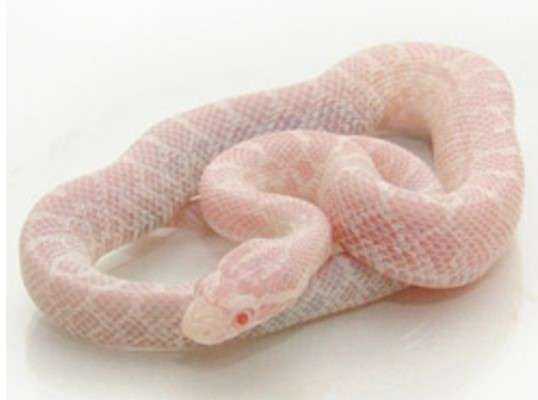
| Scientific Name | Pantherophis emoryi |
| Size | Up to 4-6 feet in length |
| Life Span | 15-20 Years |
| Location | Southeastern United States (Georgia, Alabama, and Florida) |
| Toxicity | Non-venomous |
| Estimated Price: | $100-$300 |
The Emory’s Rat Snake, or Snow Emoryi Rat Snake, is a non-venomous colubrid snake native to the southeastern United States.
Because of its attractive coloration and docile nature, it is a popular species among snake enthusiasts. They are primarily black and brown in hue. However, some can be pink as well.
3) Snow Honduran Milk Snakes

| Scientific Name | Lampropeltis triangulum hondurensis |
| Size | Up to 3-4 feet in length |
| Life Span | 18-20 Years |
| Location | Snow Honduran Milk Snakes are native to Honduras, Nicaragua, and El Salvador |
| Toxicity | Non-venomous |
| Estimated Price: | $150 to $500 |
Snow Honduran Milk Snakes, also known as Albino Honduran Milk Snakes, are a popular subspecies of milk snakes with striking coloration that are highly sought after by reptile enthusiasts.
Snow Honduran Milk Snakes, as the name implies, are predominantly white in colour with thin, irregular bands of red and black. The eyes are usually pink or red, and the tongue is a pale pink colour as well.
4) Albino Southern Pine Snake
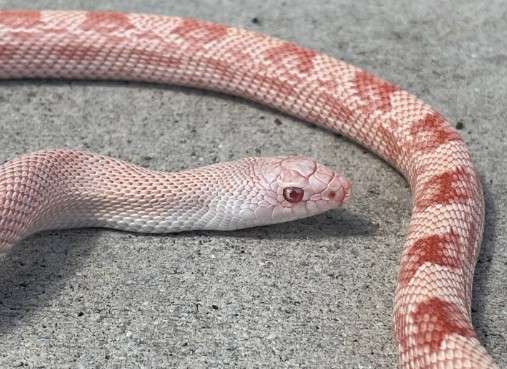
| Scientific Name | Pituophis melanoleucus mugitus |
| Size | Up to 4-5 feet in length |
| Life Span | 18-20 Years |
| Location | Southeastern United States |
| Toxicity | Non-venomous |
| Estimated Price: | $1000 to $5000 |
The albino Southern Pine Snake, also known as the white or Leucistic Southern Pine Snake, is a rare morph of the Southeastern US snake. The albino Southern Pine Snake is white or cream with black or dark brown markings.
Albino Southern Pine Snakes have white or cream bodies and black or dark brown markings. They are non-venomous and beneficial to the ecosystem. They’re rare and expensive.
5) Blizzard Bullsnake
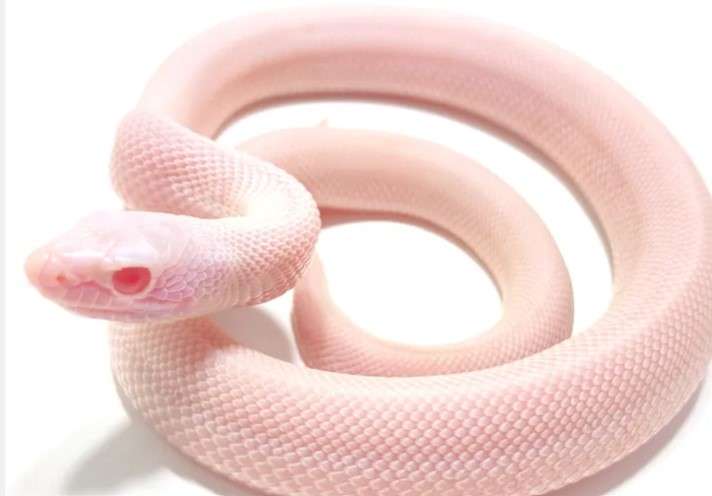
| Scientific Name | Pituophis catenifer sayi |
| Size | Up to 6 feet in length |
| Life Span | 20-25 years in captivity |
| Location | Central regions of the United States |
| Toxicity | Non-venomous |
| Estimated Price: | $1199-$3000 |
Blizzard bullsnakes (Pituophis catenifer sayi) are a subspecies of bullsnakes. Nebraska, Kansas, Oklahoma, and Texas are home to this North American snake.
White, grey, and black scales distinguish Blizzard Bullsnake. They are mostly white and grey with a few brown patches. Their smooth, shiny scales are striking.
6) Banana Pastel Ball Python
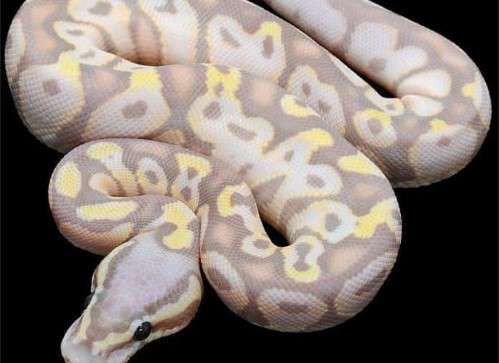
| Scientific Name | Python regius |
| Size | 3-5 feet |
| Life Span | 20-30 years |
| Location | Native to Africa, but bred in captivity |
| Toxicity | Non-venomous and not toxic |
| Estimated Price: | $400-$1500 |
The Banana Pastel Ball Python is a distinct and well-known variant of the ball python species. Python regius is the scientific name for a non-venomous constrictor snake native to Africa. This morph was created by crossing two separate color morphs, the Banana and the Pastel.
The base hue of the Banana Pastel Ball Python is light brown or beige, with deeper brown or black spots and patterns. It is distinguished by its bright yellow or orange scales and is an excellent choice for snake fans seeking a lively and colorful pet snake.
7) Pastel Russo Het Leucistic
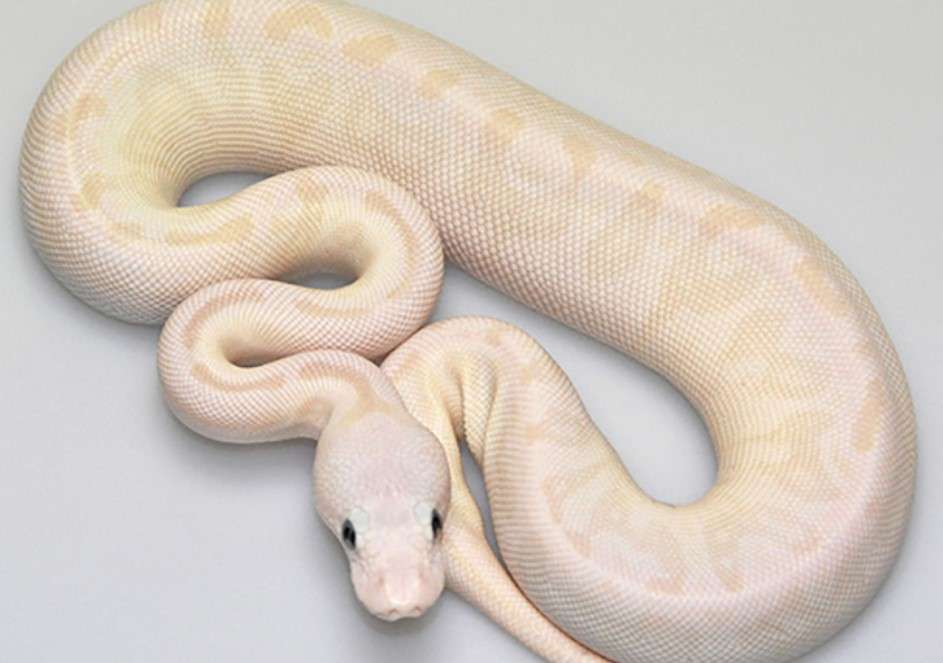
| Scientific Name | Python regius |
| Size | 3-5 feet |
| Life Span | 20-30 years |
| Location | West and Central Africa |
| Toxicity | Non-venomous and not toxic |
| Estimated Price: | $500-$1500 |
Russo Pastel, a variation or morph of the ball python (Python regius) species is called het leucistic. Pastel, Russo, and Leucistic morphs are combined to create them.
The Russo morph produces a distinctive pattern of black dots and markings on the snake’s body, whereas the Pastel morph emphasizes the yellows and oranges in the snake’s colors. In addition, the snake has blue eyes and white coloring because of the leucistic morph.
The Pastel Russo Het Leucistic ball python is non-venomous and regarded as safe to handle, like all ball pythons. All snakes, it should be noted, might carry bacteria, therefore it’s crucial to thoroughly wash your hands after handling them.
8) Pink Ball Python
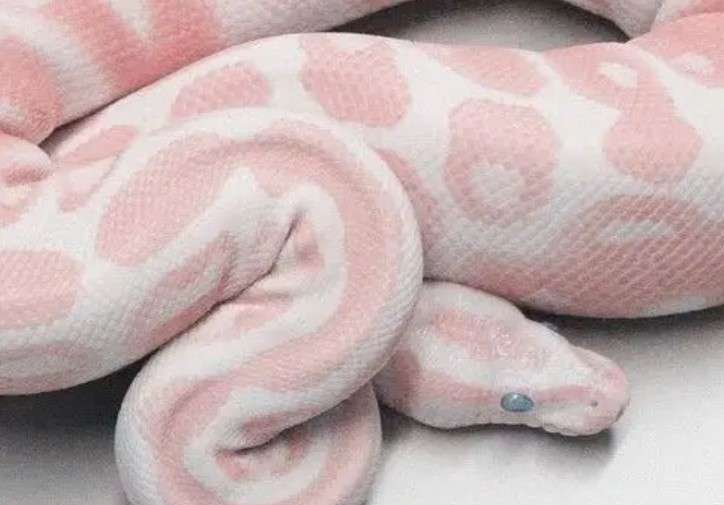
| Scientific Name | Python regius |
| Size | 3-5 feet |
| Life Span | 20-30 years |
| Location | West and Central Africa |
| Toxicity | Non-venomous and not toxic |
| Estimated Price: | $500 to $2000 USD, depending on coloration and rarity |
The Pink Ball Python is a kind stunningly attractive snake that is a member of the Pythonidae family. It also goes by the names Coral Glow Ball Python and Rosy Boa Python.
Native to West and Central Africa, this python is most common in nations like Ghana, the Ivory Coast, Togo, and Benin. Because of its distinctive and captivating colors, the Pink Ball Python is a preferred option among reptile aficionados.
The pinkish color of the Pink Ball Python, which is brought about by a genetic mutation, gives the species its name. This mutation changes the skin’s pigmentation, giving it a salmon or pastel pink hue.
The pattern of light-colored dots or blotches on the Pink Ball Python’s body, which contrast dramatically with its pinkish skin, serves to further emphasize its color. The Pink Ball Python’s vivid, reddish-pink eyes give it another distinctive feature.
9) Coral Snow Corn Snake
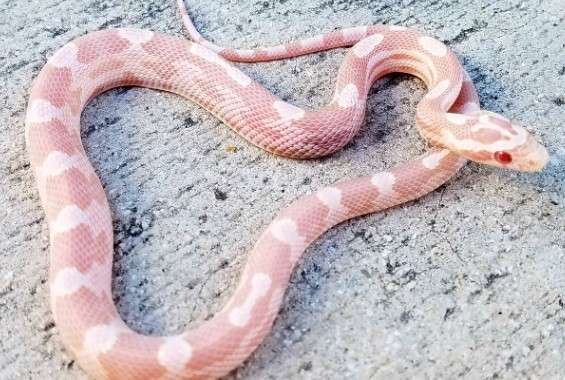
| Scientific Name | Pantherophis guttatus |
| Size | 3-5 feet |
| Life Span | 20-30 years |
| Location | West and Central Africa |
| Toxicity | Non-venomous and not toxic |
| Estimated Price: | $200-$1000+ |
Reptile aficionados highly prize the Coral Snow Corn Snake, a stunning and well-liked breed of a corn snake. The Coral Snow Corn Snake is distinguished by its stunning, vivid color.
Bright red or orange spots that form a stripe pattern down their backs contrast with their white or pink background color. Also, their brilliant red eyes add to their peculiar appearance.
10) Albino Banded California King Snake
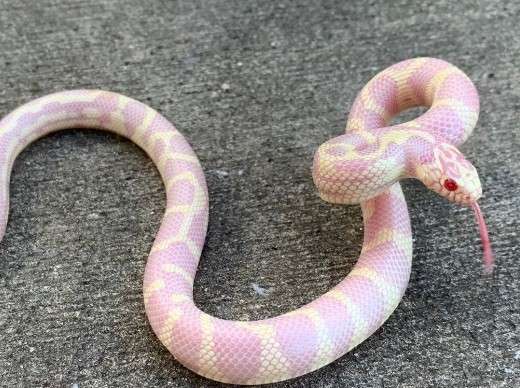
| Scientific Name | Lampropeltis zonata pulchra |
| Size | 3-4 feet |
| Life Span | 20-25 years |
| Location | Western United States, from Oregon to Mexico |
| Toxicity | Non-venomous and not toxic |
| Estimated Price: | $300-$1000 |
A magnificent reptile with vibrant colors is the Albino Banded California King Snake. It is a subspecies of the California King Snake, as its name implies, but has a distinctive albino coloring. This species’ body is covered in dazzling white scales with narrow, distinct orange-red streaks.
Typically, the head is a uniform white shade with startling red eyes. These snakes mostly eat lizards and small rodents in the wild.
They make excellent pets for knowledgeable snake keepers and are quite simple to care for in captivity. They are a favorite among snake fans due to their calm disposition and gorgeous coloring.
11) Limburg Snow Rosy Boa
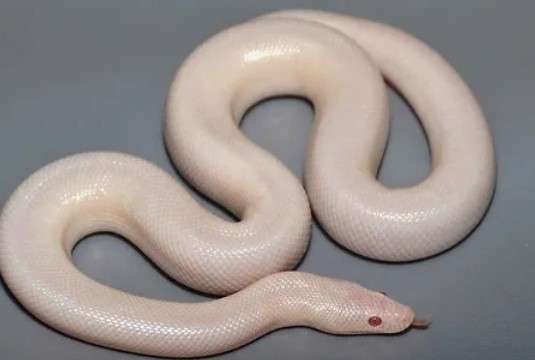
| Scientific Name | Lichanura trivirgata |
| Size | 2-3 feet |
| Life Span | 20-30 years |
| Location | Southwestern United States and northern Mexico |
| Toxicity | Non-venomous and not toxic |
| Estimated Price: | $200-$400 |
The Rosy Boa (Lichanura trivirgata), which is native to northern Mexico and the southwestern United States, has a subspecies called the Limburg Snow Rosy Boa. The Limburg family, who initially bred it in captivity in the 1970s, is honored by the name of this subspecies.
Because of its remarkable beauty and calm temperament, this snake is widely prized by collectors and hobbyists. It is a reasonable pet for many people because it is a small, non-venomous snake that normally grows to be around 2-3 feet in length.
Due to careful breeding, the Limburg Snow Rosy Boa has a distinctive color that is well known. The majority of its body is white, with pink or orange bands adorning its back and sides.
Each individual snake has a distinctive appearance due to the wide range in breadth and intensity of these bands. Often, this snake’s eyes are a vivid red or orange hue.
12) Pink Pastel Albino Western Hognose
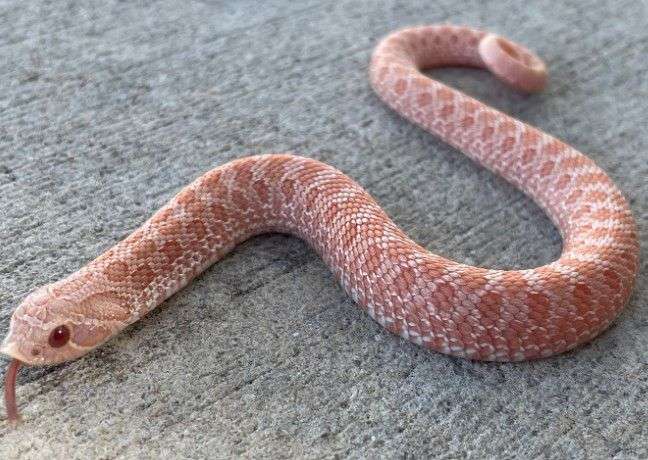
| Scientific Name | Contia tenuis |
| Size | 7-13 inches |
| Life Span | Few Years in the Wild |
| Location | Canada and Mexico |
| Toxicity | Non-Venomous |
| Estimated Price | $400-$800 |
The Pink Pastel Albino Western Hognose is an eye-catching snake. Breeding Western Hognose snakes to create colour variants produced this snake.
A Pastel Western Hognose and an Albino were bred to create the Pink Pastel Albino Western Hognose, a pale pink snake with orange and yellow markings.
The 33-inch Pink Pastel Albino Western Hognose is a medium-sized snake. It grows in sandy deserts and prairies in North America. Its weak venom is harmless to humans.
The Pink Pastel Albino Western Hognose’s hue stands out. This snake is pale pink or white with orange and yellow markings. Its eyes are brilliant pink or red. Snake collectors like this snake’s distinctive color.
13) Sharp Tailed Snake
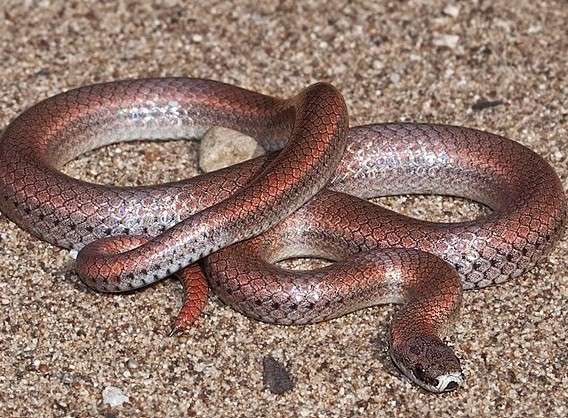
| Scientific Name | Contia tenuis |
| Size | 7-13 inches |
| Life Span | Few Years in the Wild |
| Location | Canada and Mexico |
| Toxicity | Non-Venomous |
| Estimated Price | $200-$600 |
An adult sharptail snake can grow to be only 46 centimeters long. Although the spine on their tail is sharp, it presents little danger to humans. The tail holds the prey stable.
They have been seen in a variety of colors, including gray/brown, brick red, pink, and peachy/orange. Their bellies are distinguished by black and white crossbars. Because they prefer to be hidden, seek for them under rocks. They enjoy burrowing in soft soils in the garden.
14) Pink Rattlesnake
| Scientific Name | Crotalus lepidus |
| Size | 20-30 inches |
| Life Span | 10 Years |
| Location | Southwestern U.S and Northern Mexico |
| Toxicity | Highly Venomous |
| Estimated Price | $500-$800 |
Pink rattlesnakes dwell in the southwest US and north-central Mexico. This species maxes out at 81 cm. For their size, they feature huge, spherical heads with vertical pupils. Each molt adds a rattled tail segment.
Their color matches their original rocks. Limestone-rich locations have pale grey snakes, while mountainous areas have darker ones. The Davis Mountains are pinker with dark speckles and no banding.
15) Slender Blind Snake
| Scientific Name | Genus Leptotyphlops |
| Size | 10-20 cm |
| Life Span | Only a Few Years |
| Location | Africa, Australia |
| Toxicity | Non-Venomous |
| Estimated Price | $300-$600 |
Non-venomous and skinny, slender blind snakes are called by that name. They are native to Africa and are widespread there. They seem like earthworms, yet they are smooth and shiny.
Due to their pink or brown tint and scales, they appear segmented. The majority of these snakes’ lives are spent underground; they only come to the surface when rainwater floods their tunnels.
16) West Kimberley Blind Snake
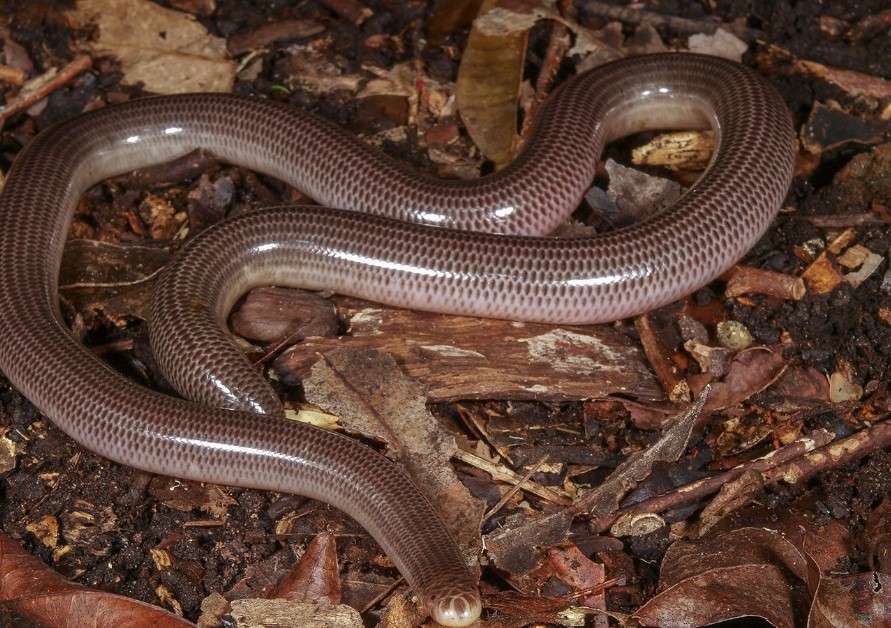
| Scientific Name | Anilios zonula |
| Size | 30 cm |
| Life Span | 10 Years |
| Location | Southwestern U.S |
| Toxicity | Non-Venomous |
| Estimated Price | $800-$10,000 |
The blind snake of the West Kimberley is an Australian reptile that is both blind and extremely slender. This species’ adults can grow to be 19 centimeters long and varies in color from very light pink to a deep purplish red.
Only sightings of this species have been documented in the Western Kimberley, on the islands of Augustus and Storr. The fossils were found beneath sandstone deposits.
17) Aruba Rattlesnake
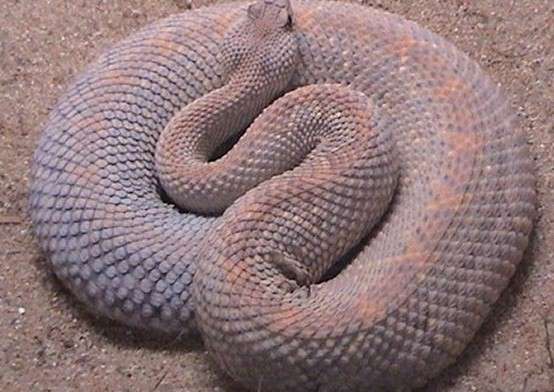
| Scientific Name | Crotalus unicolor |
| Size | 2-3 ft |
| Life Span | Rarest – 250 left |
| Location | Aruba Island |
| Toxicity | Venomous |
| Estimated Price | $600-$800 |
The venomous Aruba rattlesnake can only be found on the Caribbean island of Aruba. Adults of this snake species can grow to be up to 90 cm long. Depending on the soil in their natural area, they can be tan, light brown, or even pink.
Diamond patterns can be observed on their dark brown bodies in a variety of colors, including white, slate, brown, and apricot. Some designs may be subtle, while others may be prominent.
They can only be found in Aruba’s southeast corner, off the coast of Venezuela, in arid settings and thorn scrub.
18) Western Coachwhip
| Scientific Name | Masticophis flagellum testaceus |
| Size | 102 inches |
| Life Span | 16 Years |
| Location | Southwestern U.S |
| Toxicity | Non-Venomous |
| Estimated Price | $400-$600 |
Despite its common moniker, it is a non-venomous snake. They are only found in the southwest United States and northern Mexico. For their rather slender bodies, these snakes have small heads and large eyes.
Because of the wide spectrum of hues that mimic their native habitats, they can blend in with their surroundings. The most prevalent color is pale brown with darker brown flecks. Pink varieties, on the other hand, have been observed in West Texas.
A fully grown adult can reach a maximum length of 183 cm with its tail. Sandy soil settings that foster their prevalence include old fields, open pine forests, and prairies. Dunes along the coast are another common habitat for them.
19) Western Blind Snake
| Scientific Name | Rena humilis |
| Size | 16 Inches (Around 40 cm) |
| Life Span | 5-6 Years |
| Location | Southwestern U.S and Northern Mexico |
| Toxicity | Non-Venomous |
| Estimated Price | $300-$500 |
The Western blink snake is Leptotyphlopidae, a southwestern US, and northern Mexico-only species. They live underground like long earthworms.
Pink, purple, and silver-brown are offered. Like worms, they’re glossy and cylindrical. Their large heads and long tails help them burrow.
These snakes can reach 30 cm. They hide deep underneath and can dig up to 20 meters. They raid ant and termite nests for insects, larvae, and eggs.
20) Cotton Candy Tessera Corn Snake

| Scientific Name | Pantherophis guttatus |
| Size | 24-72 inches |
| Life Span | 6-8 years |
| Location | Eastern US |
| Toxicity | Non-Venomous |
| Estimated Price | $500-$700 |
Corn snakes, North American rat snakes, capture prey by constriction. They are prevalent throughout the central and southeastern US and resemble the deadly copperhead. Reduce rodent populations with corn snakes.
Cotton Candy Tessera Corn Snakes are pink, lavender, and white. The snake’s scales have an elaborate tessera design. Snake lovers value this morph for its remarkable appearance.
Corn snakes live about eight years in the wild. Captive specimens have survived 23 years. They are smarter and more delicate than copperheads.
21) Lavender corn snake
| Scientific Name | Pantherophis guttatus |
| Size | 4-5 feet |
| Life Span | 15-20 years |
| Location | Native to the United States |
| Toxicity | Non-venomous |
| Estimated Price | $75-$200 (depending on the location) |
Lavender corn snakes might not be found naturally, but they are certainly desired by many as pets.
To understand this snake’s unique coloration, we need to look into its genetic makeup. This snake carries not one, not two, but four recessive genes for lavender.
Its body boasts a light pink background that resembles the softest pastel shades with darker purple-gray markings throughout its body.
It also has a pair of ruby-red eyes giving it an even more sophisticated look.
22) Opal corn snake
| Scientific Name | Pantherophis guttatus |
| Size | 3-5 feet |
| Life Span | 15-20 years in captivity |
| Location | Southeastern and central parts of the United States |
| Toxicity | Non-venomous |
| Estimated Price | $175-$250 |
The Opal snake is a result of a fascinating genetic mix-up between amelanism and lavender traits.
When young, they display vibrant pastel shades of orange, pink, and lavender with lighter, almost white blotches. As they mature, these colors are subdued and the opal snake starts to become more like the Blizzard corn snake with different patterns.
Like other corn snakes, the opal snake also boasts a pair of captivating ruby-red eyes, making it yet another pet snake for you to consider!
23) Peppermint stripe corn snake
| Scientific Name | Pantherophis guttatus |
| Size | 4-6 feet |
| Life Span | 15-20+ years in captivity |
| Location | Native to the United States |
| Toxicity | Non-venomous |
| Estimated Price | $120-$300+ |
The Peppermint stripe corn snake is a marvel to behold. With their unique and vibrant coloration, they never fail to capture the attention of reptile enthusiasts.
It carries a genetic composition, a genotype of “aaaa ciccic msms”, where (a) stands for Amelanistic, (cic) stands for Cinder, and (ms) stands for Stripe.
The Amelanistic mutation reduces black pigmentation, leaving a vibrant color. The Cinder mutation adds a smoky color to its appearance, like the soft pastel shades. But it is the Stripe mutation that truly sets them apart.
24) Pastel Vanilla Bamboo Ball Python
| Scientific Name | Python regius |
| Size | 4-6 feet |
| Life Span | 20-30+ years |
| Location | Ball pythons are native to Sub-Saharan Africa |
| Toxicity | Non-venomous |
| Estimated Price | $500-$900 depending on location |
Pastel Vanilla Bamboo Ball Python made its debut in the world of snake morphs in the year 2018, thanks to the talented breeder Alessandro Maione.
The Pastel Vanilla Bamboo Ball Python is a result of blending three incomplete dominant mutations that include Bamboo, Pastel, and Vanilla.
Each of the three mutations adds its unique touch to the snake’s appearance, but don’t overpower each other.
Frequently Asked Questions:
1) What kind of snake is pink?
A pink snake can belong to different species and their distinct coloration may be due to genetic variations or specific environmental factors. One such is the Pink Panther Snake, also known as the Rosy Boa (Lichanura trivirgata), a small snake native to the southwestern United States and northwestern Mexico.
2) Can snakes be naturally pink?
Yes, some snakes are naturally pink due to genetic mutations or variations in their pigmentation.
3) Which is the cutest snake?
The Kenyan Sand Boa (Eryx colubrinus) is considered the cutest snake by many people. It has a small, chubby body and a friendly temperament.
4) What pink snake doesn’t bite?
Although many pet snakes are non-aggressive, they may resort to biting when threatened. Therefore, it is advisable to handle the snake with caution and with proper knowledge of their behavior.
5) Do pink cobras exist?
No, there have been no reported sightings of naturally occurring pink cobras
6) Is A Rainbow Snake Real?
Yes, rainbow snakes are real. The rainbow boa (Epicrates cenchria) is a real species of snake also known as the Brazilian Rainbow Boa and is native to South America. It is named for its iridescent and colorful scales.
7) Do pink snakes bite?
Yes, pink snakes, like the other snakes can bite if threatened.
8) Do purple snakes exist?
There are no naturally occurring purple snakes, but thanks to advancements in the breeding industry, breeders have developed morphs with a purple coloration. However, some snakes may exhibit a slight purple hue or something resembling purple like the Lavender Albino Ball Python.
9) Are neon pink snakes real?
No, neon pink snakes do not occur naturally in the wild. However, some captive snakes have been bred to produce offspring with bright and vibrant colors, including shades of pink.
Conclusion
In conclusion, pink snakes are attractive but rare. These pink snakes show the incredible diversity of life on Earth and remind us that beauty can be found in unexpected places. They are beautiful to watch in the woods or dense forests or even in your gardens sometimes.
References:
- Wikipedia
- AZ Animals
- Pet King
Also Read:

Hi everyone, my name is Shawna, and I’ve always been fascinated by the fascinating diversity of flora and fauna that our nature has in it. I am currently studying biotechnology and am particularly interested in animal biotechnology, delving into the intricate processes that define their true nature and uniqueness.

